Move Electric rating: four stars out of five
What is it?
The Nissan Ariya is the Japanese firm’s second electric car after the groundbreaking Nissan Leaf – a sequel it feels like we’ve waited almost as long for as Top Gun: Maverick.
So why didn’t Nissan feel more of a need for speed?
As a mainstream electric hatch, the Leaf was arguably ahead of its time when it was launched in 2010 (with a second generation following in 2017), and Nissan was certainly ahead of its rivals. But while the Leaf won it credit, the firm’s fortunes were boosted by the success of the genre-defining Qashqai – the car that it claims invented the crossover segment.
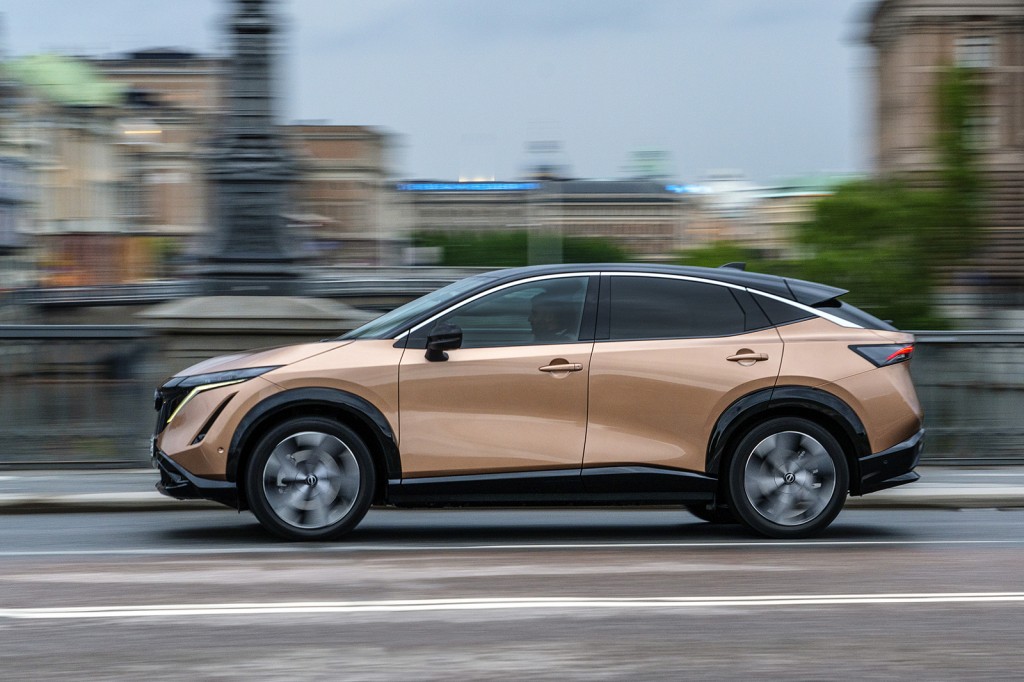
But the lowering costs of electric technology and the need to increase sales of EVs to meet fleet emissions targets have finally prompted Nissan to add a second EV to its range – and in a market it knows well: the Ariya is essentially the battery electric equivalent of a Qashqai in size. And there’s plenty of anticipation: the covers were pulled off the Ariya nearly two years ago now.
That said, while Nissan popularised the crossover category with the Qashqai, the Ariya won’t be launching into such a gap in the market. Instead, it faces a huge pool of rivals that includes the likes of the Volkswagen ID 4, Ford Mustang Mach-E, Tesla Model Y, Toyota bZ4X, Kia EV6 and countless others recent arrivals to the market.
The success of the Leaf and the Qashqai shows that Nissan is well-placed to win over buyers in that crowded field, but can it stand out in a crowded market?
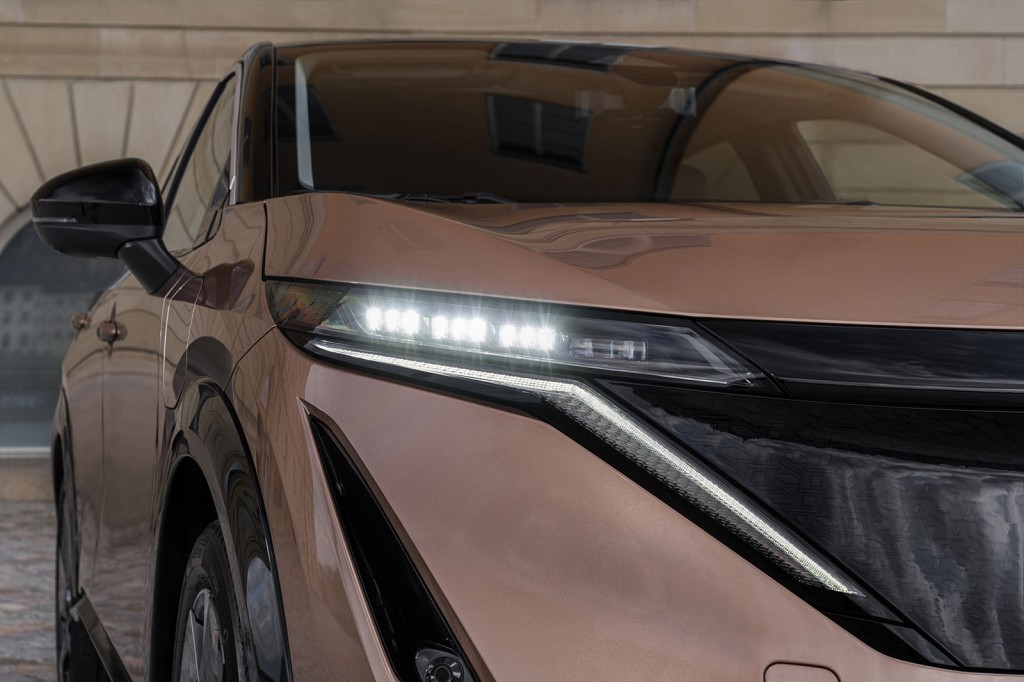
What exactly is an Ariya anyway?
Apparently, the name is derived from a word in ancient languages such as Sanskrit and Pali, and means something that is noble, dependable and respectable. Sounds like good traits for a family crossover to be aiming for, really.
It doesn’t look much like a Qashqai…
It certainly doesn’t. In fact, depending on exactly how you spec it, the Ariya is pleasingly distinctive. It’s built on the Renault-Nissan-Mitsubishi Alliance’s CMF-EV platform, and is closely related to the Renault Megane E-Tech, another electric crossover which we like rather a lot.
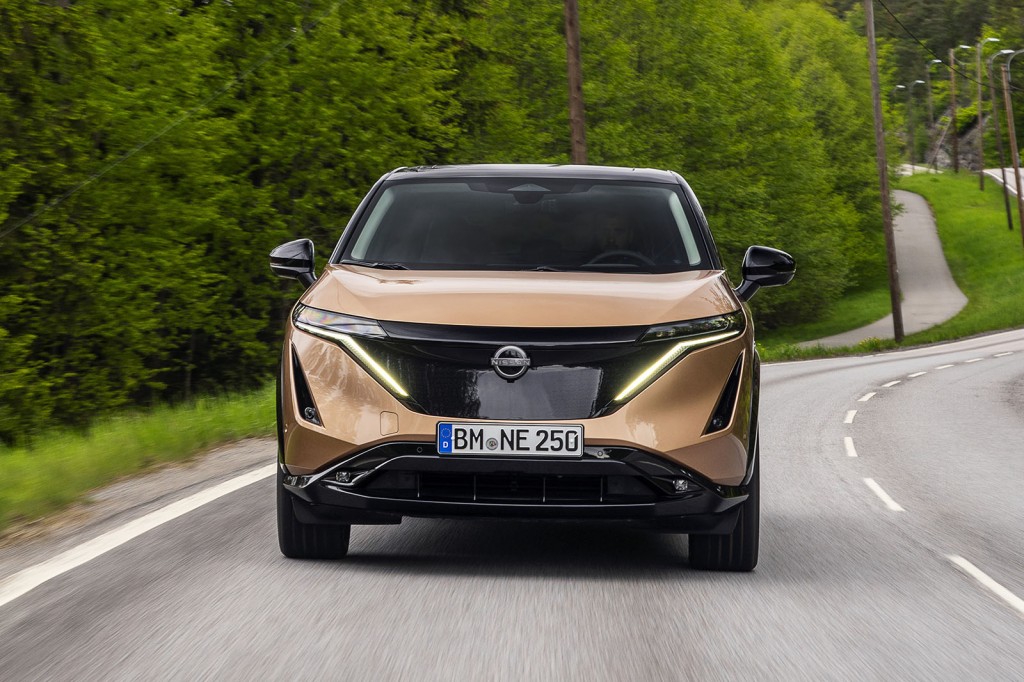
The outside of the Ariya certainly has the hallmarks of the electric crossover class, but the interior is a huge step up from the relatively conservative cabins you’ll find in the Qashqai and Juke combustion-engined cars.
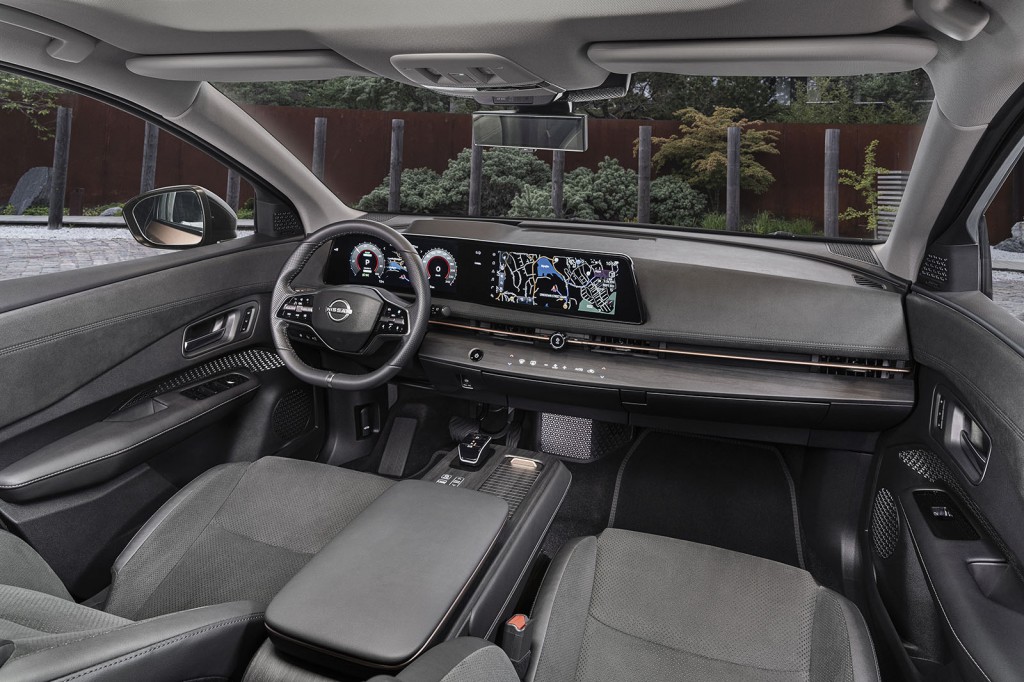
There’s a pair of crisp 12.3in touchscreens, which use an intuitive infotainment and control system, while a head-up display is standard. There are also illuminated haptic climate controls – which work far better than similar systems in other cars – and lots of electric tricks, such as a sliding centre console and a pop-out dashboard storage bin.
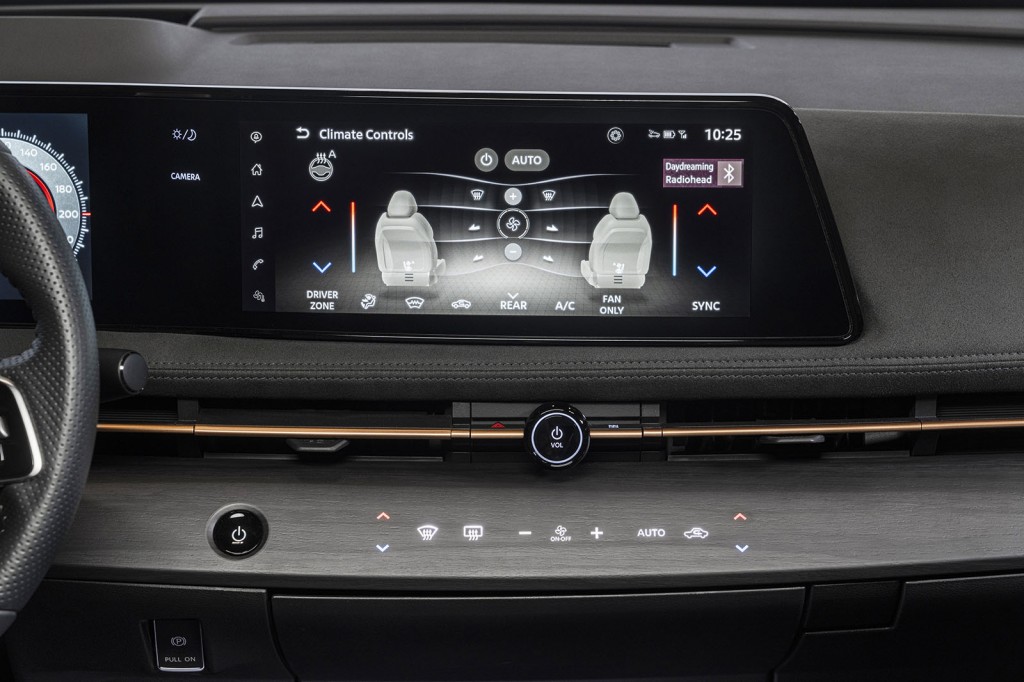
It feels far plusher than many other cars you’ll find at this price point – our test car in plush Evolve trim came in at £47,480 – although with higher-specs stretching into the mid-£50,000 bracket that does put it up against some cars that are arguably a little more premium.
The Ariya’s sloping roof does impact rear visibility somewhat, but it remains bright and airy and there’s also plenty of legroom in the back. There's also a competitive 466-litre boot.
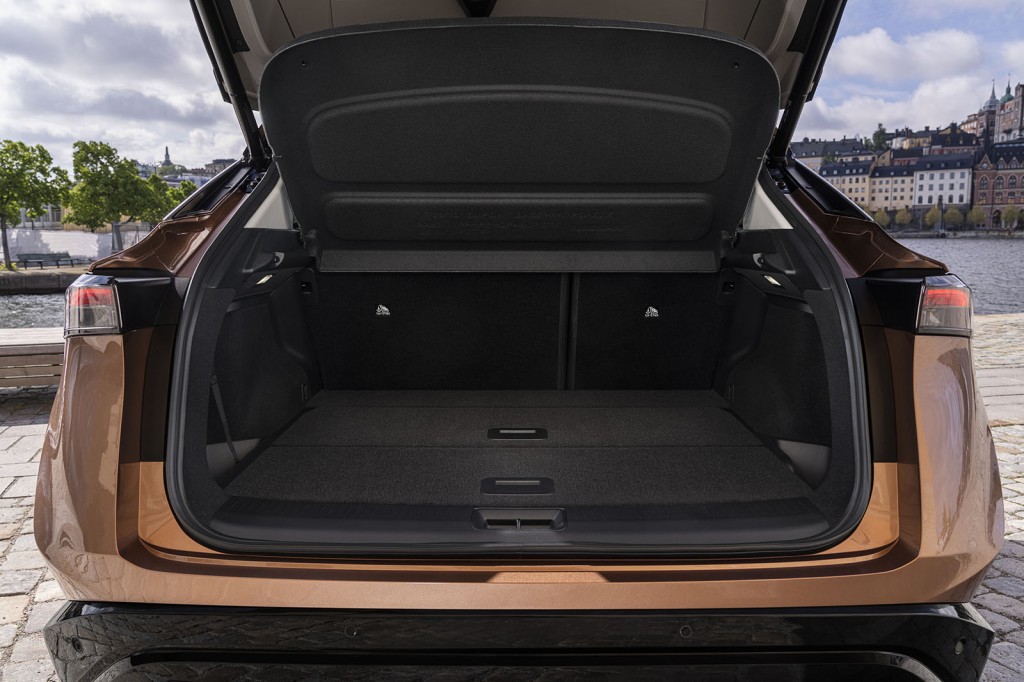
What about the powertrain?
While our test model came in range-topping Evolve trim it featured the entry-level front-wheel-drive powertrain, which uses a single motor and offers 186kW of power and 221lb ft of torque.
There will also be a 178kW front-drive option, and then three specifications of cars that use two motors and offer all-wheel-drive (which Nissan has branded e-4orce, and previously demonstrated on a ramen noodle delivery machine).
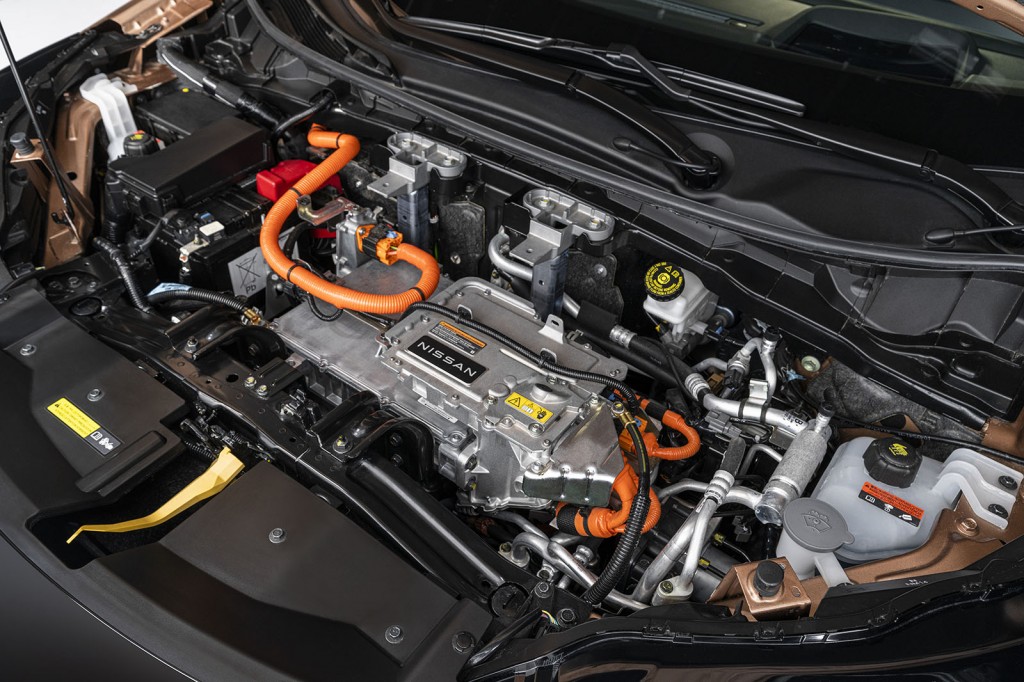
The AWD options will feature 205 and 225kW options, and then a range-topping 290kW and 443lb ft Performance option.
There will be a choice of two battery sizes. Our entry-level model featured the smaller 63kWh battery for an official range of 250 miles, while the larger 87kWh unit will offer up to 329 miles.
All Ariya models will be capable of charging at speeds up to 130kW, which is usefully quick but hardly stands out these days – and is well short of the 350kW that the Hyundai Ioniq 5 and Kia EV6 can manage. On the other hand, we struggle to fit in a toilet break and a trip to Starbucks at those speeds…
How does it drive?
While we’ve yet to sample the Ariya in more powerful form, we have a strong suspicion that this lower-powered version could be the sweet spot in the range for the car’s target audience: Qashqai-loving families who value practicality and comfort over poise and dynamism.
The power delivery is pleasingly smooth and makes up for the lack of outright punch, and a 0-62mph of 7.5 seconds will be more than enough for many. That acceleration doesn’t really tail off until you get close to the legal limit, either, which will help when overtaking slower traffic.
![]()
You can hustle the Ariya along, of course, and as with many non-performance EVs it will do so quickly but without ever really engaging. The 48:52 weight distribution makes the car responsive, the steering is light and the chassis is well-rounded. It also handles well in corners, although the emphasis is on being predictable rather than enthralling.
At slower speeds around town, it’s the equal of the Volkswagen ID 4 for low-speed refinement, and you have to hit a particularly big bump to really feel it. It’s pleasingly quiet too, with little tyre and wind noise until you get up to higher speeds. That said, the roads in Sweden where we tested the Ariya were smoother and in better condition than those you’ll find in the UK.
![]()
What rivals should I consider?
Well, all the ones we’ve mentioned earlier, really. The smaller Renault Megane E-Tech has much of the same technology but with a bit of French flair, while the Volkswagen ID 4 and Toyota bZ4X are perhaps the closest rivals in terms of big brand name mass market family SUVs.
As ever, the Hyundai Ioniq 5 and Kia EV6 are worth considering in this class, and at certain price points buyers will also want to look at the Tesla Model Y.
Verdict
It might have been a long time coming, but as with Top Gun: Maverick, the Ariya has been worth the wait. It takes the dependability and class of the proven and popular Leaf, adds a confident, assured drive and mixes in a real does of style and kerb appeal.
The Ariya is much more than an electric Qashqai: it feels like a big statement and step forward from Nissan, and is a compelling new arrival in the crossover class. It’s also got us very excited about what is to follow from the firm.
![]()
Nissan Ariya specifications
Price from: £41,845 (price as tested £47,480)
Motors: 1 permanent magnet synchronous
Gearbox: Automatic
Driven wheels: two
Power: 160kW
Torque: 221lb ft
Electric range (official): 223 miles
Energy consumption (official): TBC
0-62mph: 7.5 seconds
Top speed: 100mph
Dimensions: Length 4595mm, width 2172mm, height 1660mm, wheelbase 2775mm
Kerb weight: from 1800kg
CO2, tax band: 0g/km, 2%
Rivals
READ MORE
Subscribe to the Move Electric newsletter
e-CARS
UK charging networks: complete guide to every provider
New Cupra UrbanRebel is a bold EV supermini with 273-mile range
e-BIKES
10 fun things to try on an electric bike
Living with a Gocycle G4: how easy is it to adjust to?
e-MOTORBIKES
Seat Mó eScooter 125 UK review
How to do a CBT on an electric motorbike
Energica unveils new Experia electric tourer motorbike
e-SCOOTERS
Are e-scooters legal in the UK?
Private e-scooter rules 'cannot simply copy' rental regulations
Superpedestrian's European boss on why e-scooters are for everyone
e-WORLD
New Candela P-12 Shuttle to arrive as first electric ‘flying’ ferry
Pipistrel Velis Electro: meet the first certified electric plane

